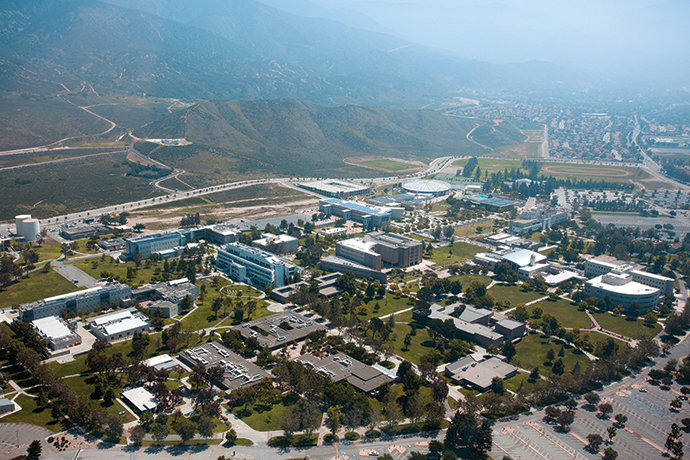The largest county in the U.S. has its sights set on becoming the greenest.
San Bernardino County, encompassing more than 20,000 square miles in the eastern portion of Southern California, will soon be home to the largest bioenergy project in North America.
Construction is underway on a Rialto Bioenergy Facility (RBF) that will convert 700 tons per day of food waste and 300 tons per day of bio-solids into renewable natural gas, renewable electricity and Class A organic fertilizer. Upon completion later this year, the RBF will be the largest food waste diversion and energy recovery facility on the continent.
How a city of 103,000 people in a county of 2.2 million landed such a significant green energy project is a lesson in innovation, entrepreneurship and workforce.
That story is best told by Yaniv Scherson, managing director of the Western U.S. region for Anaergia Inc., the company building not only the new plant in Rialto, but a second one in nearby Highland, California. Separated by just 13 miles, these mid-sized cities in San Bernardino County will soon be home to two of the most advanced bioenergy facilities in the world — and a reason that San Bernardino County is becoming known for innovation in this space.
“Rialto had an existing asset with the base conditions and permits in place. It’s strategically located in Southern California to serve the entire metro area,” says Scherson. “And in Highland, the community is building a wastewater treatment facility. They’ll be better served by treating their own water and making recycled water. Both cities have access to a strategic workforce.”
Highland has 55,000 residents and, like Rialto, access to a county labor pool of 1 million workers. The opportunity to invest in both communities was too good to pass up, says Scherson. “In the case of the new plant in Highland, the city was open to a renewable energy facility, so the community decided to build it and chose us to provide the anaerobic digester.”
Anaerobic digestion has become fairly common in Europe but is still relatively new in America. Anaerobic digestion involves a series of biological processes in which micro-organisms are used to break down biodegradable materials in the absence of oxygen. One of the byproducts of this process is biogas, which is combusted to produce electricity and heat, or processed into renewable natural gas and transportation fuels.
Gaining Worldwide Attention
“Both of these facilities in San Bernardino County will have significant benefits on multiple fronts,” says Scherson. “One benefit is that these projects create high-tech jobs. These are advanced energy infrastructure projects. Secondly, they’ll provide energy savings for the residents of these communities, delivering an economic benefit back to each city. And thirdly, these facilities are groundbreaking and world class. They’re attracting interest statewide, nationally and globally.”
Scherson says the principals involved are “building a cleantech industry in the region, particularly in the bioenergy space. We’re part of a vision in creating a facility that is an asset for the community. We’re creating high-tech jobs through renewable energy generation.”
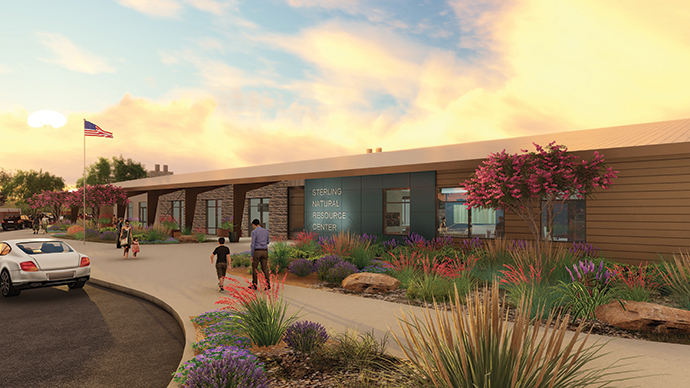
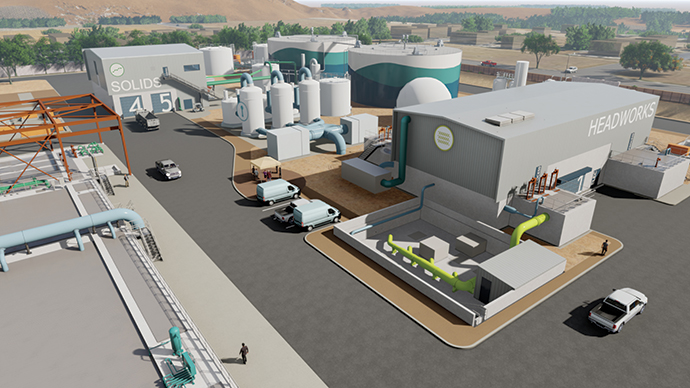
The Highland facility is a project of the East Valley Water District, which voted last September to approve the addition of co-digester technology at the Sterling Natural Resource Center (SNRC). The enhancement enables the SNRC to produce enough renewable electricity to meet the facility’s energy needs, with additional electricity transferred to the energy grid.
The SNRC, set for completion in 2022, will provide a sustainable water supply to boost the region’s water independence. The plant will be capable of treating up to 8 million gallons of water a day and recharge the local Bunker Hill Groundwater Basin. The East Valley Water District serves 102,000 residents in the City of Highland and surrounding communities.
The Rialto plant will produce the equivalent of 13 megawatts of clean energy per year. The net carbon dioxide emissions reduction will be about 220,000 metric tons annually, equal to taking 47,500 cars off the road. Rialto, 50 miles east of Los Angeles, is near the center of the Agua Mansa Industrial Corridor, an area zoned for heavy industry.
The RBF is co-funded by the California Energy Commission, the U.S. Department of Energy, CalRecycle, the State of California and significant private investment. Collaborators in the venture include Waste Management, Republic Services, Southern California Edison, Anaheim Public Utility, Southwest Gas Utility, City of Rialto, the Sanitation Bureau of the City of Los Angeles, and the Sanitation Districts of Los Angeles County and Orange County.
“We are proud to be working with industry leaders in the solid waste, wastewater and renewable energy industries to build one of the largest organic recycling facilities in the world serving the Southern California region,” said Andrew Benedek, CEO of Anaergia Inc. “Our new plant will demonstrate a truly sustainable and replicable way to meet the state’s organics diversion and recycling need.”
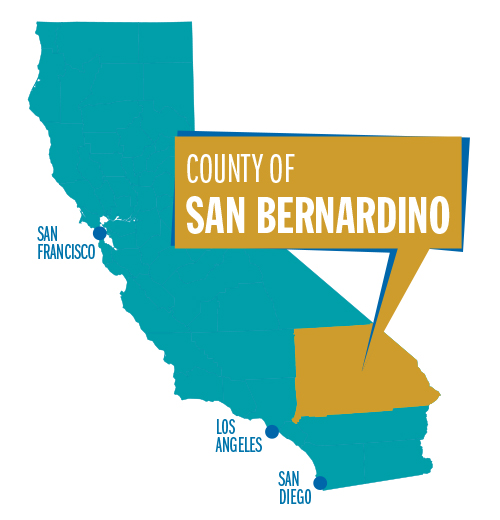
The Highland plant is smaller but equally impactful. The plant will initially convert up to 8 million gallons per day of wastewater and up to 130,000 gallons per day of imported organic waste streams into 3 megawatts of renewable power for the facility, clean water for replenishing the groundwater aquifer, and the potential for fertilizer to improve soil quality.
About 30 direct jobs and 100 indirect jobs will be created by the Rialto project, while Scherson says the job impact of the Highland plant is “unknown at this time.”
The environmental impact of these plants cannot be denied, he adds. “This technology exists in many parts of the world, but mostly in Europe,” he notes. “California has adopted the most aggressive greenhouse gas reduction bill in the country. That legislation creates a need for this facility. By recycling organics into carbon-negative fuel, this is a major stepping-stone into a new era in California.”
Creating a Model Cleantech Venture
John Mura, CEO and general manager of the East Valley Water District, says the Sterling Natural Resource Center is a game-changer for the community, the county and the region. “I think it starts with the fact that we’re using progressive design-build,” he says. “Traditionally, public agencies would spend 1.5 to two years on design. Then they would publicly bid it. You would get 35% more or higher costs than what you budgeted. Because of that, you would typically go with the low bidder and then go through litigation and change orders throughout the project. We’ve partnered with a builder, designer and engineering firm to identify the outcomes, establish a guaranteed max price, and outline the goalposts. It allows us to do things much faster. It cuts out the two years when nothing happens. This is a two-to-three-year construction project.”
The project in Highland is a model cleantech venture, he adds. “We’ll generate enough power to run the whole facility and sell the surplus power,” says Mura. “We’ll develop a revenue stream from food waste. There’s tremendous pressure on municipal trash haulers. Currently, they have to ship food waste to Arizona, absorbing a huge expense. They won’t have to do that here. We’re creating a mechanism to raise revenue from trash companies. They’ll pay us a tipping fee to take their food waste. This creates a new revenue stream for our agency. The final win comes from the byproduct of the byproduct — fertilizer. We’ll convert our old property into a bagging plant for fertilizer, which will then go back into the ground to help this region grow more food.”
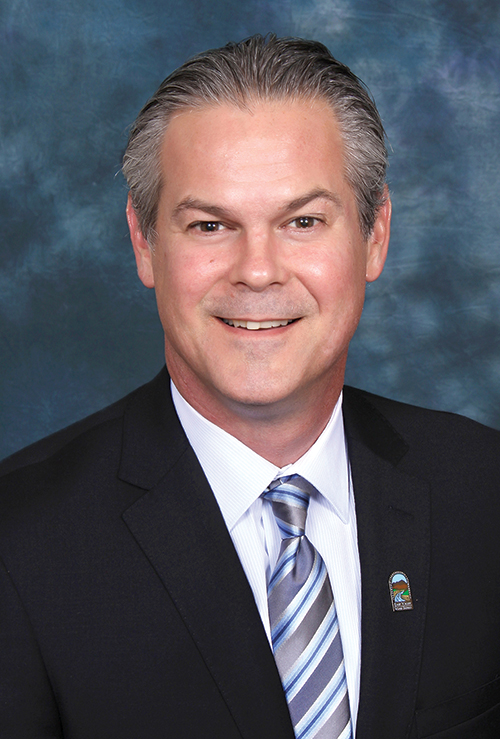
“We’ll generate enough power to run the whole facility and sell the surplus power.”
Beyond these ecological benefits, notes Mura, is a strong workforce component. “The SNRC is across the street from a public school complex,” he adds. “We’ve been working on developing a water and sewer certification pathway. Our vision is that we’ll be working with kids K-12 and getting them excited about water conservation and renewable energy and providing them hands-on experience. We can employ them, and so can other water agencies, in very good-paying careers. By working here, they can learn even more about the distribution chain for food, water and bioenergy.”
Giving Vets a Place to Call Home
Elizabeth Perez, founder and CEO of GC Green, a general contracting firm that specializes in clean energy and water, is excited about the workforce aspect. “We work in underserved communities and with women-owned companies,” she says. “We work where economic development needs a boost. Growing up in the Central Valley, I always wanted more. I’m also a veteran. Our mission is to train vets transitioning to construction trades and other careers.”
Perez’s firm is partnering with Anaergia on the projects in Rialto and Highland. “We’ll provide outreach and put on different events in the surrounding area to raise awareness, engage in workforce development that is more diverse, and target people ages 18 to 25,” she says. “Our goal is to get vets hired. I’m a Navy vet of nine years. I was deputy secretary of Veteran Affairs for California prior to this job. Vets are an underserved population; we plan to change that.”
Perez says San Bernardino County has the “fourth or fifth largest pool of vets in California. March Air Force Base is 45 minutes away. San Diego is 90 minutes away. Miramar and Camp Pendleton are close by, and Pendleton is one of the largest Marine bases in the nation. Some 300 exiting military transition out of Pendleton each week. They all do not leave California, and they’re out looking for jobs. We can get them hired.”
Perez adds that “this project is good for the community all the way around. The openness of the leadership and the outside-the-box thinking in San Bernardino County make this possible. They see the paybacks and the benefits of this technology. San Bernardino County recently was ranked No. 8 in the state in clean energy jobs. This is about combatting climate change, creating greater energy efficiency, and generating good jobs for people who need them. Things have to change, and this is one way I can serve outside the uniform.”
This Investment Profile was prepared under the auspices of San Bernardino County government. Employers interested in San Bernardino County Workforce Development Board programs may call (800) 451-JOBS or visit www.sbcounty.gov/workforce. For more information, contact the county Economic Development Agency at 909-387-4700. On the web, go to www.SelectSBCounty.com.
